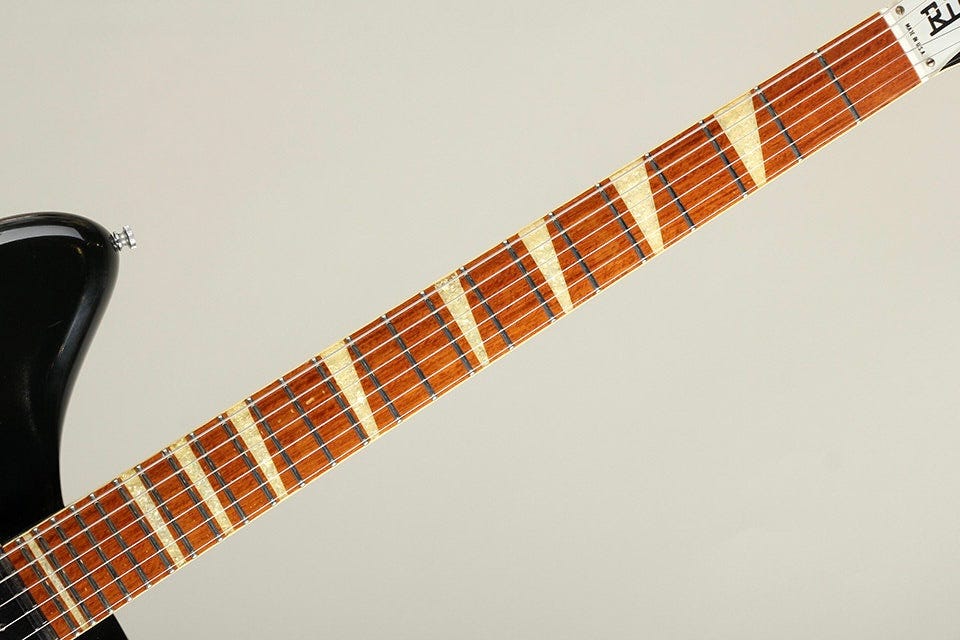Short Takes: 1971 360

From around 1970 to late 1973 Rickenbacker played around with the 360 quite a bit. From top to bottom, a number of details changed. To wit:
The headstock went from the skinny “vintage” shape to the bloated “Gumby” shape. This was done to facilitate the transition from…
Kluson deluxe tuners, which were changed to Grover Rotomatics.
The neck length increased to allow a transition from 21 frets to 24.
Inlays on the neck transitioned from full width crushed pearl triangles to inset poured resin triangles.
Pickups changed from toasters to transitional/first gen Higains to button top Higains.
And the binding on the back went from checkered to plain.
During this period, you can find 360s with all sorts of combinations of these features. But on top of this, there were a couple of detours along the way that didn’t make it to the end of 1973. We’ve already highlighted a 1972 guitar with two of the most notable detours: slanted frets and a bound headstock. Here’s another one of those detours (and no, it’s not the Bigsby!).
The 24 fret neck first began appearing on the 6-string 360 in mid 1970. And from then until April 1971 the fret markers for these new frets were…a little different!

From the third fret to the nineteenth…same crushed pearl triangles as its older 21 fret brother. But the 24th fret got a marker as well, a rectangular crushed pearl bar that—given the limited available real estate—took up pretty much the entire space.

Guitars with slanted frets did not get the 24th fret marker. And around May of 1971 it disappeared for good. The only 24 fret Rickenbacker model with triangle inlays since to wear markers past 19 is the low production 4030 short scale bass. Making this just one more of those early 70s oddities!


re: "Guitars with slanted frets or bound headstocks did not get the 24th fret marker."
yeah, no...